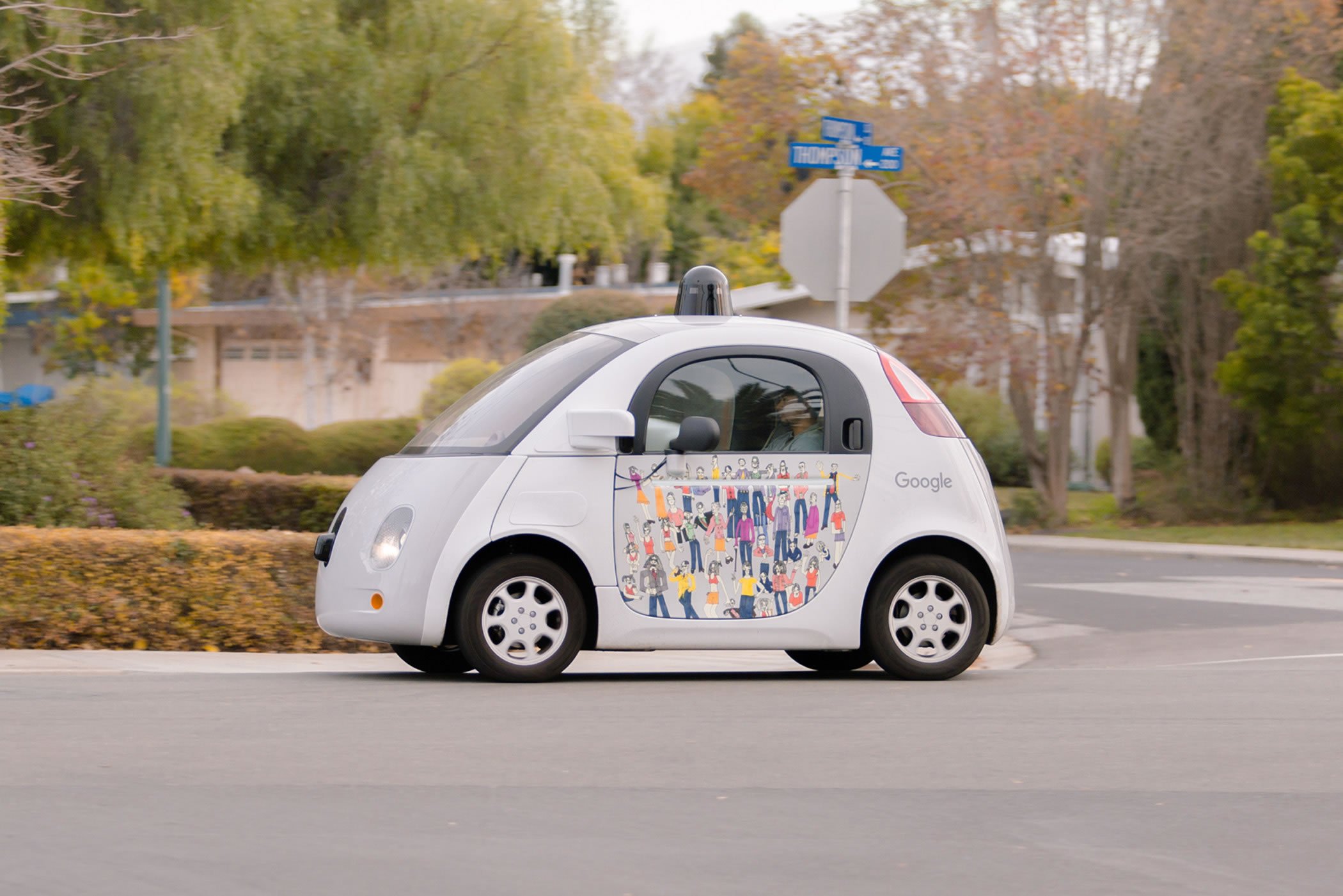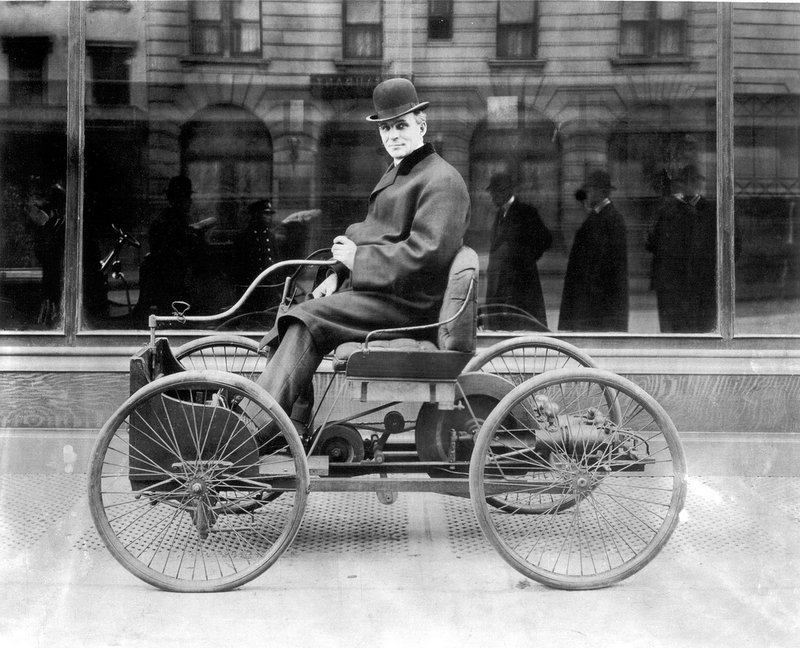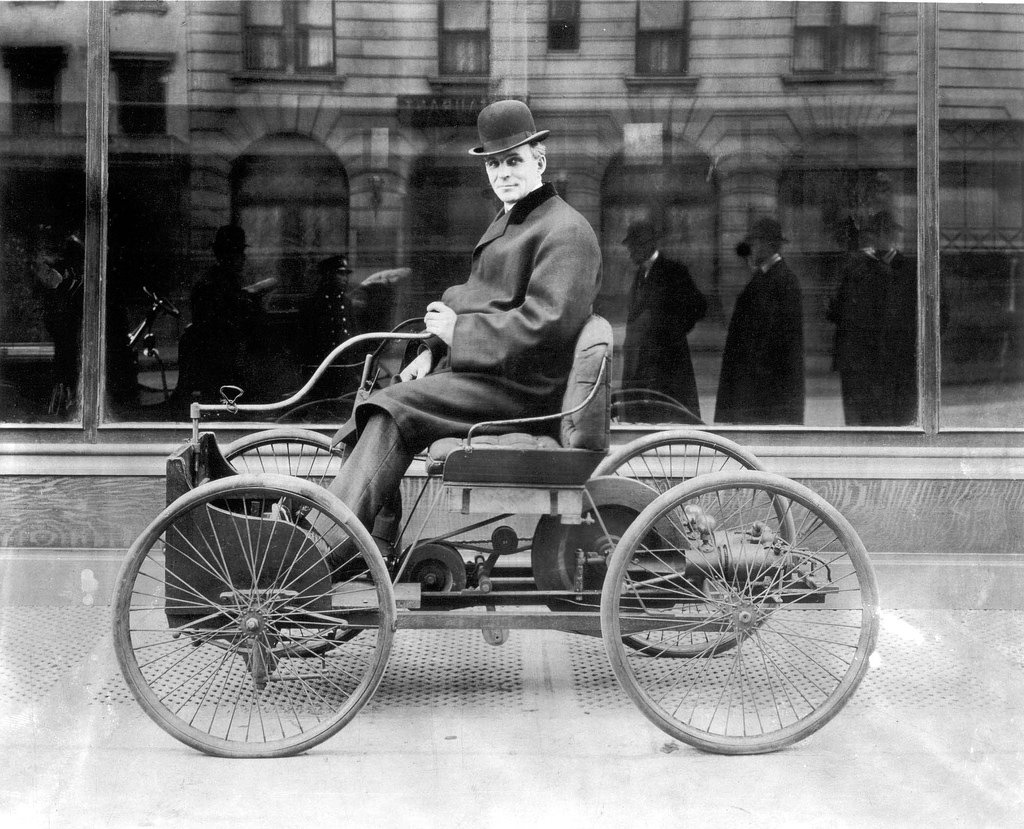Last week Elon Musk unveiled the Tesla Model 3. And then 325,000 people put down $1000 to get one. Now, in the following Twitter exchange, friends of mine joked about me driving the Tesla Roadster around San Francisco. Alas, I hope I will never have to buy a Tesla. Further down is why.
Growing up in Germany especially as a boy, you obsess over cars. You read Auto Motor @ Sport, the flagship car review magazine from cover to cover. You dream about being a test driver for that magazine.
When my old man got a new car I would sit in it for hours and just take it in, push all these buttons to find out what they are for. Including the cigarette lighter. It popped, I took it out and watched fascinated how the orange glow of that hot wire in the middle would rapidly disappear. Once the glow was gone, I concluded it was safe to put my thumb on it. — Well, I was sure I just had burned new fingerprint lines into my thumb. ;-)
Driving a car was the ultimate excitement. You looked down on the geezers driving an automatic, and everyone independent of age driving an automatic was a geezer. What do you do when the battery is dead in a stick shift car? You push it, or let it roll down a hill and pop the clutch. The feeling of accomplishment, when it would start, was out of this world.
Times have changed. For me it started when I read about the first concepts of Nicolas Hayek’s Smart Car. He realized, that for all city driving, which for most folks living in cities is 90% of their driving, you don’t need a fast car. What does your 0-60 in under 6 second help you when driving from traffic light to traffic light?

You can build a total different car if you built it just for city driving. You don’t need a big engine, your whole car can be lighter, needing less energy. At low speed the car’s aerodynamic plays less of a role, therefore you can build the car more upright. Nicolas Hayek’s original concept was to built the car so small, that you can drive it sideways onto a train. Above you see a Rinspeed model illustrating that concept. It was genius: all your long distance travel would be done via train and all your city driving via the Smart Car.
Hopefully in the not too distant future our cities will be connected via Elon’s Hyperloop. A self driving car drops you off at a Hyperloop station in one city and you get picked up by another self driving car at your destination.
Soon owning a car will not be worth the hassle. Charging, maintenance, insurance, washing, … will all be taken care of; you just order a car when you need it. I want to go somewhere, but I seldom want to push a hunk of metal around on asphalt to get there.

Once self-driving cars are possible, the design of our vehicles will adjust to these new opportunities. Once we can eliminate the steering wheel and the need for us to keep an eye on the road at all times, totally new car designs will evolve. You want to drive to LA from San Francisco? Hyperloop not available yet? Order a car with a bed in it and get gently driven there over night.
Quick trip to meet a friend in town, you may choose one of these self stabilizing Car/Motorcycle combinations like the L1 Motors C1 or the Toyota I Road that whisks you over there in no time.
This above video is a possible design direction, even though it isn’t self driving yet. The sad thing is, that the video was done in 2012 and I haven’t seen a lot of movement since from Lit motors.

Tesla’s Model 3 will one day be seen as the last hurrah of the HD Car aka human driven car. It will look as alien as the first horseless carriages. Like the Ford above, where you are totally wondering, where are the horses?
I am excited about the opportunities that are opening up though self driving electric cars and the freedom it will enable, not having to own one. I won’t be buying a Tesla 3. I won’t be buying period. But I will still try out new buttons, probably the ones on new devices I can tinker with. Always careful not to get new thumbprints!

Comments 3
All good points on the future of transport, but we’re not there yet.
The car companies have created an industry which is fueled by a “Sergey Bubka”-mentality. Bubka broke the world record for men’s pole vault 35 times during his career, almost always by the lowest possible margin (1 cm). The car companies are in principle doing exactly the same by introducing minimum viable innovation to their products on a yearly basis. In some weird way this makes sense, as it may be the optimal strategy in order to increase shareholder value. The extremly high capex cost for new challengers wanting to enter the industry only makes this strategy even more attractive.
You can clearly see the “Sergey Bubka”-mentality of the car industry based on how they have approached the electric vehicle. Of course electric vehicles are not new (indeed some of the earliest vehicles were electric), but there was a general convergence of trends in the 1990s which made the concept much more viable and potentially game changing. The established car industry however followed what they’ve always done and created two variations of the electric car:
1. “Hybrid car”
2. “Second car”
For the “hybrid car” the car companies are basically saying: “Let’s just add an electric motor and some batteries to our existing car. That should do it!”. You end up getting a car that is even more complex than normal Interal Combustion Engine (ICE), and whose environmental benefit is extremely tied to if the drivers can be bothered to charge the car when stationary (top tip, most of them won’t).
For the “second car” the car companies are basically saying: “OK ok, if you really really really must have an electric car we’ll let you buy one from us. BUT, you need to promise us you also have a real car”. What categorizes this “second car” is that it instills a range anxiety mentality into their owners. You basically end up having this conversation to your car
Owner: “Hey car, I want to drive down to that city during my vacation next week?
Car: “Not sure if I can make it there and back on a single charge”
Owner: “What if I find some chargers to use on the way”
Car: “Yes, that might help, but what if they are closed or if there is a long queue”
Owner:”Well, I expect we can find a charger at the destination”
Car: “Risky.. Don’t blame me if you can’t”
We need to break out of this “Sergey Bubka”-mentality to come to the future of transport you envision, and I believe Tesla is one of the companies to drive this paradigm shift.
With the Tesla Model S there are some key innovations which will force a permanent change upon the industry:
1. The electric vehicle is the primary vehicle, not just a “second car”
2. The vast supercharger network is part of the service you buy with a Tesla
3. The car you buy is a service which is updated as advances on the software are made
4. Minimum viable auto-pilot which collects invaluable data and will be incrementally expanded on
5. Car service can be part of the service you buy with a Tesla
6. All Tesla patents have been released by Tesla for fair use
(with the epic blog title “All Our Patent Are Belong To You”)
Tesla approaches cars as a service which follows you throughout the car’s lifetime (btw this is a major trend in improving the use of IT also, check out Service Design Thinking)
I believe existing car companies will be forced to changed (or die out), and new contenders besides Tesla will emerge. Apple and Google are obvious examples, another one is the Faraday Future (LeEco’s LeSee) which just had a new concept vehicle presented 20 April https://www.youtube.com/watch?v=WUcDoITdGZo (this specific vehicle may fail, but there is a change in the industry happening).
There are two ways we can help accelerate the change in the car industry:
1. Vote with our wallets
2. Invest in the contenders which can change the car industry
That’s why I’m buying another Tesla.
@Dagfinn
I have a lot of time for Tesla and its products. They’re innovative and disruptive, challenging the way the car industry works.
To a degree.
Here are my main thoughts:
1. Tesla is not the only contender and innovator in the EV market
That’s right. Companies like Nissan, BMW and Renault have invested a lot of money into EV technology. This has been done whilst keeping their responsibilities in terms of production, warranty, spares, stocks and servicing to their millions of existing customers. I am the most accustomed with BMW’s i brand, who are leading the way with their CFRP bodywork. CFRP makes stronger and lighter car chassis, a technology used to great extend in the i3 and i8. Especially the i3 has been designed with recycling and energy efficiency in mind – the car has a very different mission from the Model S and was conceived as a City car, helping to lower tailpipe emissions in urban areas. The bavarians have sold almost 50,000 of these cars since late 2014 and it equates to about 1.2% of their monthly manufacturing output. I own one and the i3 (a car at less than half the price of a Model S) has essentially taken the role of our main family vehicle.
2. Tesla is currently not turning a profit
Whilst producing these great cars for £58,000 – £110,000 they can’t seem to turn a profit. Necessary R&D costs are blamed, which is understandable. But this situation can’t go on forever. Call me old fashioned, but I do like it when companies can turn a profit and still come up with some interesting EV ideas – see my previous point.
3. You don’t always have to be the first to eventually rule or play a dominant part in a market
Think of Android or think of the VW Touran. None of these products started as a market leader. Some were regarded as late – VW was thought to have sleepwalked themselves out of the family tourer segment completely – yet they came to play a significant part in their markets or market segments.
4. When it comes to cars, consumers are used to convenience
You can argue as much as you like. Depending on where you need to go, the current supercharger network does not ALWAYS allow you to always travel from A to B in a direct way. I checked 2 of our regular GB holiday destinations (Wales and Cornwall) and I would have to rely on more than Tesla’s SC network to get there and back. Nothing is perfect, true. But for around £65,000 I would expect more.
5. Don’t underestimate the power of the PHEV
This is going to be a big market segment in the very near future. Mitsubishi has done a good job with the Outlander and this car sells very well! It is also a good entry level drug for EVs. This will build up brand loyalty and a good way to introduce other EVs to these customers, once they’re ready to take the plunge. For example, by 2020 BMW is going to have 16-20 EVs and PHEVs in their line-up. Partially this is because EU regulations force them to, but can also be contributed to Tesla’s presence.
6. If -as you say- a Tesla is supposed to be regarded as a serious first car, then most people would want a range significantly higher than 300 miles.
This is a main sore point for me. When bought from new, the Model S is an expensive car for what it can do (250-300 miles if you drive sensibly). Looking at the Model X, things get worse, which is why not many of those have actually sold so far.
7. The next Model 3 pricing is not set in stone, neither are the delivery times
It’s clear that use of the SC network will be an option. Reality is that those who have preordered a 3 will wait for around 2 years from now and pay more than is currently rumoured. By the time it will eventually get delivered to customers, other EVs will be available, too. We are talking Q1-Q2 2018.
8. Publishing patents is just another way of OEMing the market
I’ve worked in the automotive industry for many years now and OEM is the name of the game. What Tesla is trying to do their their publicising of patents is similar to trying to rule a market by defining your won standards and trying to enforce these on the market. Musk says that the CCS charging standard was developed by Committee. The question I would ask him is which standards by committee Tesla has used to build their cars, software and hardware? I’m sure you would come up with a text as long as one of the ZZ Top beards if you were to enlist all standards used in their products.
Is all of this keeping me from even considering a Tesla car in the future? Far from it. But there’s a little saying about cars we have in German: “Autos fangen mit ‘Ahh” an, aber hoeren mit ‘Ohh’ auf.” (cars begin with Ahh and end with Ohh). It’s a play on the letters in the word A-U-T-O, but also connects to the experience and euphoria when purchasing a vehicle (“Ahh”), albeit being shocked later about how expensive and costly it can be to run it (“Ohh”).
I’ve owned enough cars to be prepared for the “Ohh” and skip the hype.
Author
My big hope for the future of transportation is two fold: I don’t need to own or drive a car. I click a button and by the time I walk out of my door a car is there to whisk me away. I am convinced that this is our future.
How to get there the fastest is another question. I think Google with their pod cars are the closest to creating such an environment at least within dense city environments.
@Michael you may be able to get rid of your big car by renting one when you go on your vacation trip.
What I see the established car companies do is developing another electric vehicle, but I don’t see them working on an integrated transportation system or the learning networked car as Google and Tesla are doing.
In the long run the network will rule.